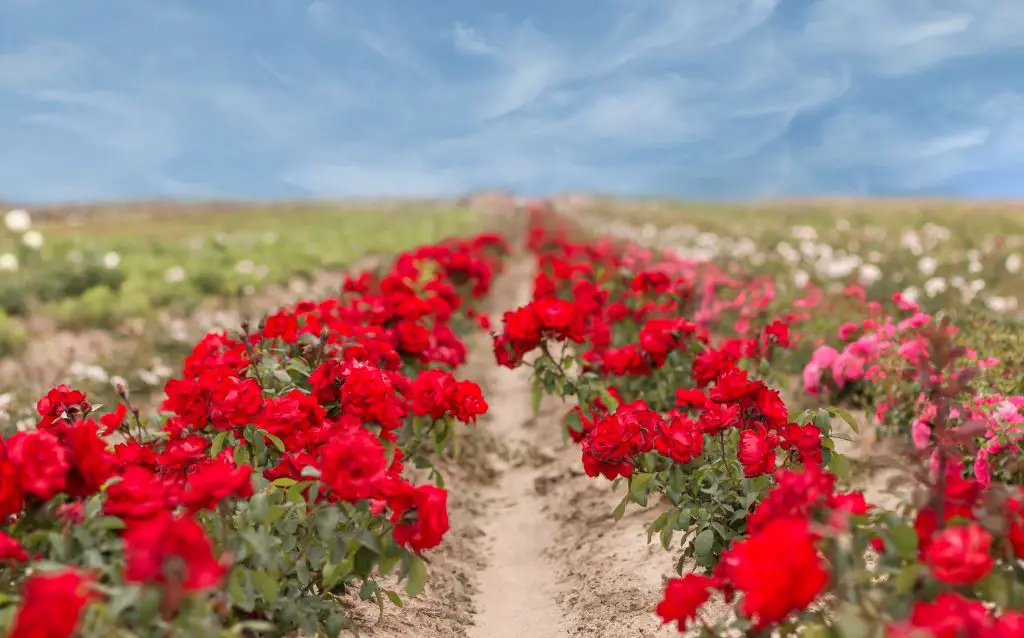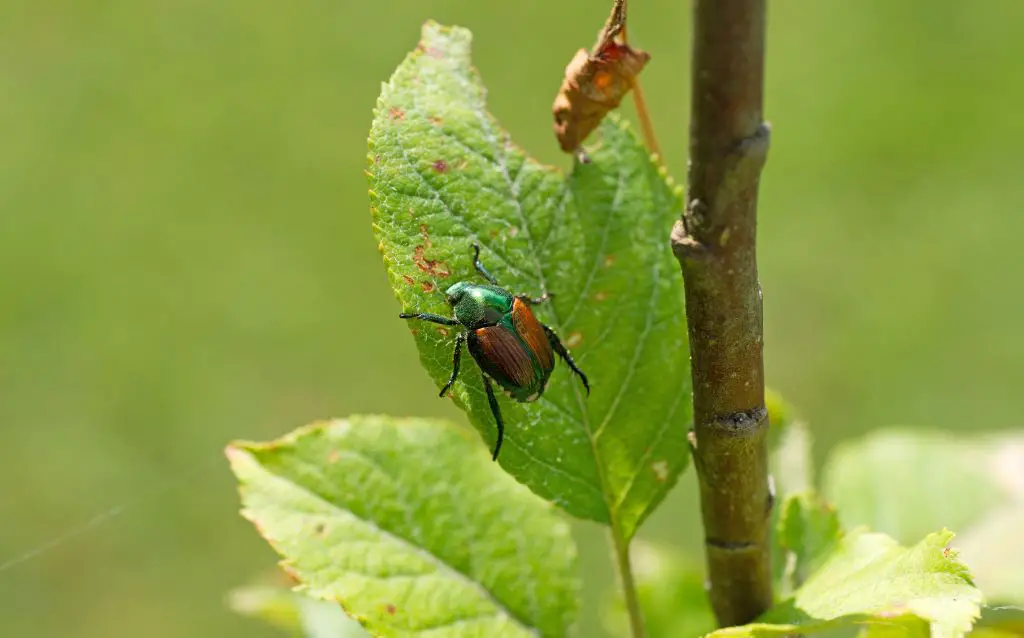Last Updated on May 23, 2023 by Derek

Valencia Red Rose care involves providing well-draining soil with a slightly acidic pH level. These roses require deep watering once a week and 6-8 hours of direct sunlight daily. Organic fertilizers rich in nutrients are recommended, and proper pruning techniques help promote healthy growth and increased blooming.
Valenicia Red Rose Care:
Valencia Red Roses are renowned for their deep, velvety red petals and enchanting fragrance, making them a symbol of love and passion.Proper care is essential for maintaining the health and vibrancy of Valencia Red Roses over time. Soil should be well-draining with a slightly acidic pH level (between 6.0 and 6.5) for optimal growth.
Water deeply once a week, avoiding wetting the leaves, and provide 6-8 hours of direct sunlight daily.
Fertilize with organic options rich in nitrogen, phosphorus, and potassium, avoiding synthetic fertilizers.
Pruning promotes healthy growth, shape maintenance, and increased blooming, while pest control methods keep harmful insects at bay.
Advanced care techniques include stem cutting propagation and companion planting for enhanced health and beauty.
Utilizing organic fertilizers offers long-term benefits for soil and plant health compared to synthetic ones.
Proper deadheading and maintaining the correct soil pH level are crucial for maximizing bloom production and rose health.
The Splendor of Valencia Red Roses
Valencia Red Roses are one of the most exquisite rose varieties, characterized by their deep, velvety red petals that possess an enchanting fragrance. These roses are a sight to behold – their beauty is unrivaled, and they have become a symbol of love and passion. Not to mention, they make for an extremely impressive gift!
But the significance of these roses goes beyond just their aesthetic appeal. They have been used throughout history in various cultures as symbols of love, romance, and even politics.
In ancient Greece, they were associated with Aphrodite, the goddess of love and beauty. And in more recent times, they have been used as a political symbol – the Valencia Red Rose is the official flower of the city of Valencia in Spain.
The Importance of Proper Care
While it’s undeniable that Valencia Red Roses are breathtakingly beautiful on their own, proper care is crucial for maintaining their health and vibrancy over time. Without proper care, these roses can quickly wilt and lose their luster.
But beyond just maintaining physical appearance, taking good care of your roses can also enhance your overall quality of life. The act of tending to your garden can be soothing and therapeutic; it allows you to connect with nature and find peace amidst the chaos of everyday life.
So if you’re looking to add some splendor to your garden or surprise someone special with a truly timeless gift – don’t forget about the importance of proper care! With some patience and dedication, you too can experience the full glory that Valencia Red Roses have to offer.
The Basics of Valencia Red Rose Care
| Plant Common Name | Scientific Name | US Growing Zone | Hardy/Perennial | Soil Type | Sunshine Requirements | Water Needs |
|---|---|---|---|---|---|---|
| Valencia Red Rose | Rosa ‘Valencia’ | 5-9 | Hardy | Well-draining | Full sun | Regular watering |
Soil requirements and preparation
Let’s face it, roses are picky about their soil. But if you want your Valencia Red Roses to thrive, you need to be too. To start, make sure the soil is well-draining.
Roses don’t like sitting in waterlogged soil for extended periods of time, which can lead to root rot and other problems. If your soil is too compacted or heavy, consider adding sand or perlite to improve drainage.
Next up is pH levels. Roses prefer a slightly acidic soil with a pH between 6.0 and 6.5.
Test the pH level of your soil with a testing kit available at most garden centers or online retailers. If necessary, adjust the pH level by adding lime for more alkaline soil or sulfur for more acidic soil.
When preparing the planting hole for your Valencia Red Roses, make sure it’s at least twice as wide as the root ball and equally deep. Mix in some well-aged compost or manure with the existing soil to provide additional nutrients and improve overall soil health.
Watering schedule and techniques

The key to watering roses is consistency and moderation – neither too much nor too little will do them any good! Water deeply once a week (or more often during hot spells) rather than giving them daily sips from a hose. Aim for approximately one inch of water per week (including rainfall).
To avoid wetting leaves when watering overhead, use soaker hoses or drip irrigation systems instead of sprinklers. Avoid getting water on the leaves as much as possible as this can encourage disease development; instead, focus on watering around the base of the plant where it will soak into the roots directly.
Sunlight needs and placement
Here’s one area where I’m absolutely inflexible: roses need sunlight. Lots of it.
Ideally, Valencia Red Roses should receive a minimum of 6-8 hours of direct sunlight each day. Without enough sun, your roses won’t bloom as well or grow as vigorously.
When choosing a planting location for your Valencia Red Roses, look for an area with full sun exposure that is sheltered from strong winds – wind can damage the blooms and foliage and make it difficult to keep the plants hydrated in dry conditions. When it comes to basic Valencia Red Rose care, soil, watering, and sunlight are three areas where you absolutely cannot compromise.
Make sure you provide your roses with well-draining soil that has the right pH level, water them deeply but not too frequently, and give them plenty of sunshine to bask in. Stick to these basics and you’ll be well on your way to growing healthy and beautiful Valencia Red Roses!
Nurturing Your Valencia Red Roses
| Fertilizer | Use |
|---|---|
| Organic Rose Fertilizer | Apply in early spring and again in midsummer according to package instructions. |
| Slow-release Granular Fertilizer | Apply once in early spring, following the recommended dosage for roses. |
| Liquid Fertilizer | Use as a foliar spray every two weeks during the growing season. |
Fertilizing tips for optimal growth and bloom production
One of the most important factors in growing beautiful Valencia Red Roses is proper fertilization. To ensure optimal growth and bloom production, it’s crucial to select a high-quality fertilizer that is rich in nutrients such as nitrogen, phosphorus, and potassium. However, not all fertilizers are created equal.
Synthetic fertilizers may provide a quick boost, but they often contain harsh chemicals that can harm the delicate ecosystem of your garden. Instead, opt for organic fertilizers such as compost or manure.
These natural options offer a slow-release of nutrients that can be readily absorbed by your roses without causing any harm to the environment. Additionally, consider using a liquid fertilizer every couple of weeks during the growing season for an added boost of nutrients.
Pruning techniques to encourage healthy growth and shape maintenance

Pruning is an essential aspect of Valencia Red Rose care that many people overlook. Proper pruning techniques can help encourage healthy growth and shape maintenance while also promoting increased blooming throughout the season.
When it comes to pruning your Valencia Red Roses, timing is everything. Start by removing any dead or diseased wood from your roses in early spring before new growth begins.
Then, throughout the growing season, prune back any weak or crossing branches to promote better air circulation around the plant’s center. Additionally, consider shaping your roses into attractive designs such as arches or trellises – but be sure not to over-prune as this can cause stress on the plant.
Pest control methods to keep your roses free from harmful insects
| Pests and Diseases | Treatment |
|---|---|
| Aphids | Use insecticidal soap or neem oil. |
| Black Spot | Prune affected leaves and apply fungicide. |
| Powdery Mildew | Apply fungicide or use a baking soda spray. |
| Japanese Beetles | Handpick and destroy beetles or use insecticides. |
| Rust | Remove infected leaves and apply fungicide. |
Nothing ruins a beautiful rose garden quite like an infestation of pests! As with all aspects of Valencia Red Rose care, prevention is key when it comes to controlling insects such as aphids or thrips.
Start by ensuring proper soil drainage and avoiding over-fertilization, as this can attract unwanted pests. If you do notice signs of an infestation, consider using natural pest control methods such as introducing beneficial insects like ladybugs or lacewings to your garden.
Alternatively, you may use non-toxic insecticides such as neem oil or soap spray to keep pests at bay. Whatever method you choose, be sure to monitor your roses closely for any signs of damage and take action immediately if necessary.

Advanced Care Techniques for the Enthusiast
Propagation methods for expanding your rose collection
For those who truly appreciate the beauty and uniqueness of Valencia Red Roses, one plant just simply isn’t enough. Luckily, propagating these stunning plants is a relatively simple process that can lead to an endless supply of vibrant red blooms in your garden.
One popular method is called stem cutting propagation. This involves taking a cutting from an existing rose plant and planting it in soil to grow into a new plant.
Before taking the cutting, make sure to select a healthy stem that is at least 6 inches long and has several leaves. Cut the stem at an angle just below a leaf node and remove any flowers or buds.
Dip the cut end in rooting hormone and plant it in well-draining soil. Keep the soil moist and within 4-6 weeks, you should have a new Valencia Red Rose plant!
Companion planting suggestions to enhance the health and beauty of your roses
Valencia Red Roses are known for their striking beauty, but did you know that certain companion plants can actually help improve their health and growth? One such companion plant is garlic.
Garlic contains natural compounds that repel pests such as aphids, which can be detrimental to your roses. Planting garlic around your rose bushes can keep these pesky insects at bay.
Another great companion plant for Valencia Red Roses is lavender. Not only does lavender emit a lovely scent that will attract pollinators to your garden, but it also has antifungal properties that can help prevent diseases from affecting your roses.
Creative pruning techniques for shaping your roses into unique designs
Pruning isn’t just about maintaining the shape of your Valencia Red Rose bushes – it’s also an opportunity to let your creativity shine! One popular technique is called topiary pruning, which involves shaping your rose bushes into intricate designs such as spirals or pyramids.
To achieve this, carefully trim away excess growth around the edges of your rose bush, gradually shaping it into your desired design. Another fun pruning technique is called espalier pruning.
This involves training your rose bush to grow flat against a wall or trellis in a decorative pattern. To achieve this, start by trimming away any excess growth and carefully bending the remaining branches in the direction you want them to grow.
Tie them in place with garden wire or string and continue to shape them as they grow throughout the season. With these advanced care techniques for Valencia Red Roses, you can take your gardening game to the next level and create a beautiful, unique garden full of vibrant red blooms.
Rarely Known Tips for Expert-Level Care
The Benefits of Using Organic Fertilizers Over Synthetic Ones
Okay, listen up fellow rose enthusiasts. I’m about to drop some knowledge bombs on you that will change the way you think about fertilizing your Valencia Red Roses.
Forget those synthetic fertilizers with their fancy labels and promises of quick results. They’re not doing your roses any favors in the long run.
Instead, opt for organic fertilizers that provide your roses with slow-release nutrients and promote healthy soil. Organic fertilizers are made from natural materials such as bone meal, blood meal, and compost.
They work by breaking down slowly over time, providing a steady stream of nutrients to your roses without causing any chemical imbalances in the soil. Synthetic fertilizers, on the other hand, are often made from petroleum products and can cause a buildup of salt in the soil, leading to root burn and nutrient deficiencies over time.
So do yourself a favor and switch to organic fertilizers for your Valencia Red Roses. Your garden will thank you for it.
How to Properly Deadhead Your Roses for Maximum Bloom Production
Deadheading is an essential part of rose care that often gets overlooked by even seasoned gardeners. If done correctly, however, it can lead to increased bloom production and healthier plants overall. To deadhead your Valencia Red Roses properly, start by identifying spent blooms that have turned brown or wilted.
Using sharp pruning shears or scissors, make a diagonal cut just above a leaf node on the stem. This will encourage new growth from that point and prevent energy from being wasted on producing seed heads.
It’s important to note that not all roses require deadheading – some naturally drop their spent blooms without intervention from the gardener. However, for those varieties that do benefit from deadheading (such as Valencia Reds), taking the time to do it correctly can lead to a more vibrant and abundant display of blooms over time.
The Significance of Soil pH Levels on Rose Health
Let’s talk about soil pH levels for a minute, shall we? I know, I know – it’s not the most exciting topic. But trust me, understanding the pH level of your soil is crucial for the health and success of your Valencia Red Roses.
Soil pH is a measure of the acidity or alkalinity of your soil, on a scale from 1 to 14. Most plants (including roses) prefer a slightly acidic soil with a pH around 6.5-7.
Anything outside this range can lead to nutrient deficiencies or toxicities that can harm your plants. To test your soil pH, you can purchase a home testing kit or have your soil professionally tested.
If you find that your soil is too acidic (below 6.5), you can add lime to raise the pH level. If it’s too alkaline (above 7), sulfur or other acidifying agents can be added.
It may seem like a small detail, but paying attention to your Valencia Red Rose’s soil pH levels can make all the difference in their health and longevity in your garden. So don’t overlook this important aspect of rose care!
Conclusion
Valencia Red Roses are a truly beautiful addition to any garden or outdoor space, but they require proper care and attention to truly thrive. By following the tips outlined in this guide, you can ensure that your roses will grow healthy and strong, producing vibrant blooms year after year.
The key takeaway from this guide is that proper care is absolutely essential for Valencia Red Roses. From soil preparation to pruning techniques, each step plays a crucial role in ensuring the continued growth and beauty of your roses.
While it may take some effort and patience on your part, the end result will be a stunning garden full of bright red blooms that are sure to impress. So go ahead and give it a try!
With dedication and hard work, you too can create a beautiful outdoor space full of Valencia Red Roses. Whether you’re a seasoned gardener or just getting started, the tips in this guide will help you achieve success with these stunning flowers.
How do you take care of a red rose bush?
To care for a red rose bush, choose a sunny location, provide well-drained soil, water deeply but avoid overwatering, fertilize regularly, prune in early spring, and monitor for pests and diseases.
How do I keep my rose bush healthy?
To maintain a healthy rose bush, ensure adequate sunlight, water deeply and regularly, apply organic mulch, fertilize with a balanced rose fertilizer, prune in early spring, and address pest and disease issues promptly.
Do red roses like sunlight?
Yes, red roses, like all roses, require at least six hours of direct sunlight daily to thrive and produce vibrant blooms. Adequate sunlight ensures healthy growth and enhances the color and quality of the flowers.
How do you keep roses alive indoors?
To keep roses alive indoors, trim the stems at an angle, use a clean vase with water and floral preservative, remove submerged leaves, place in a cool location away from direct sunlight and drafts, change water every few days, and lightly mist the petals to maintain moisture.
Why do my indoor roses keep dying?
Indoor roses may die due to insufficient sunlight, overwatering or underwatering, low humidity, temperature extremes, poor air circulation, or pest and disease infestations. Ensuring proper lighting, watering, humidity levels, and ventilation while addressing pest and disease issues can help prolong the life of indoor roses.
How long does an indoor rose last?
The lifespan of indoor roses can vary depending on various factors such as the rose variety, care provided, and environmental conditions. On average, indoor roses can last anywhere from a few days to two weeks or more when given proper care and optimal conditions.
Related posts:









